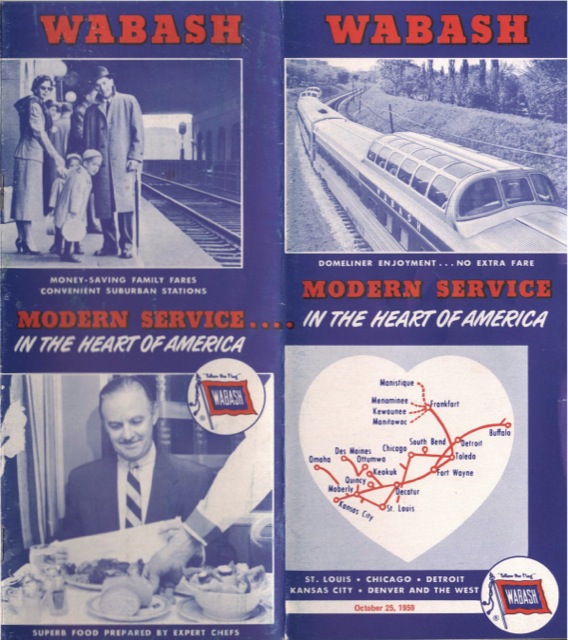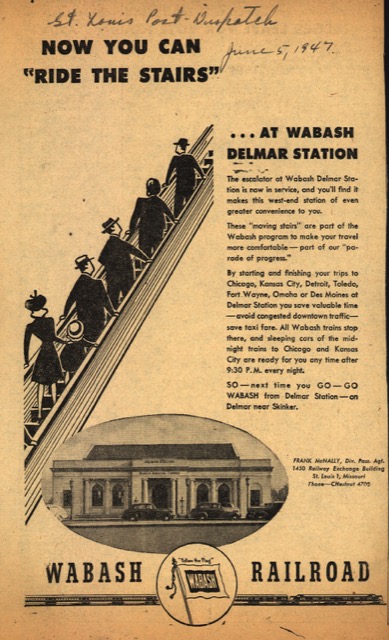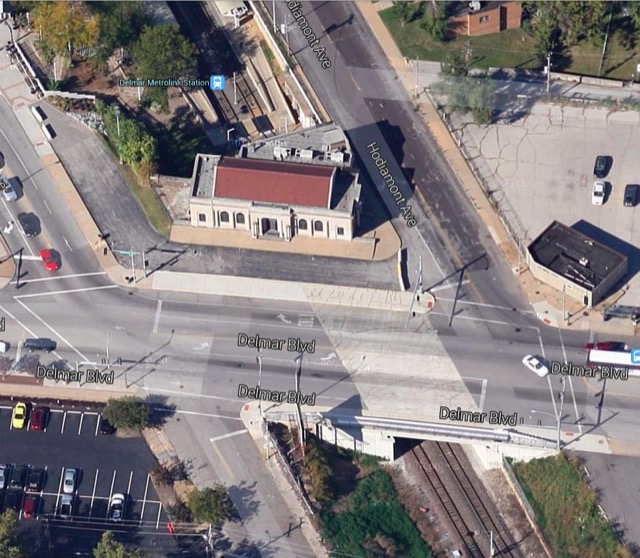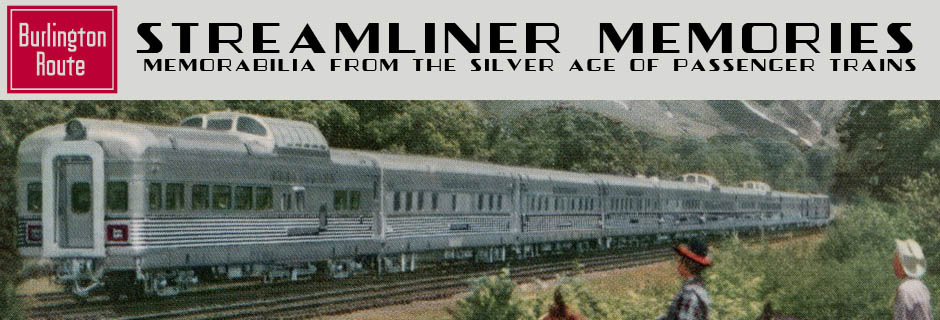In 1959, Wabash passenger trains apparently served four main routes: Chicago-St. Louis, St. Louis-Kansas City, St. Louis-Detroit, and St. Louis-Omaha. There was also one local route between Centralia and Columbia, Missouri.
 Click image to download an 11.3-MB PDF of this 16-page timetable.
Click image to download an 11.3-MB PDF of this 16-page timetable.
The Chicago-St. Louis route was served by the Banner Blue, the domeliner Blue Bird, and the Midnight. St. Louis-Kansas City had the morning domeliner City of Kansas City, afternoon domeliner City of St. Louis, and overnight Midnight Limited.
St. Louis-Detroit had the Wabash Cannon Ball, a rare case of a train named for a song, and the overnight Detroit Limited. Finally, St. Louis-Omaha had the westbound overnight Omaha Limited and the eastbound daylight St. Louis Limited, which obviously used the same equipment in both directions. The local route connected Centralia (on the St. Louis-Kansas City line) with Columbia, a distance of about 22 miles, using one passenger train and two mixed trains daily.
The timetable indicates that most of these trains used at least some streamlined equipment, as most of the overnight trains list roomettes (which I believe were only found on streamlined cars) among the sleeping car accommodations and most of the trains also indicate Sleepy Hollow seats in the coaches. The Cannon Ball lists a parlor car and chair cars with reclining seats, suggesting it may be heavyweight equipment. The Omaha train may also have been partly or wholly heavyweight.
 Click image for a larger view.
Click image for a larger view.
St. Louis was clearly the hub of Wabash operations. In addition to terminating at St. Louis Union Station, Wabash trains also stopped at the railroad’s own Delmar Station, which was 5.6 miles from Union Station. As the ad above shows, in 1947 the railroad added an escalator to the station, which was at the street level above the train tracks. The photo below shows that the station still exists and the site is used for the MetroLink light rail (which uses the former Wabash route), although the station itself needs restoration.

Click image for a larger view. Taken from Google maps.

I can’t find a copyright date on the national map in the middle of the timetable, but it must be before 1947, since it still shows the Tonopah and Goldfield Railroad as being active. The map also still shows the Virginia and Truckee, even though that road was abandoned in 1950. I think this is the most out of date national map I’ve ever seen on a timetable.
Regarding Sleepy Hollow seats, they are probably the best indicator of streamlined equipment. They weren’t installed until 1947, and only in streamlined equipment. Roomettes are a little more tricky. B&O, as one example, first used roomettes in “lightweight” semi-streamlined cars in 1937. I believe they called them Slumbercoaches. Several railroads that ran their own sleepers were using roomette type accommodations before the start of WWII.
Jim